New Jersey Butterfly Club
A chapter of the North American Butterfly Association (NABA)
Monarch
Danaus plexippus
Identification: Large—3.8". Above: FW and HW orange with white-spotted black margins, and black veins crossing both wings. Males also have a small black scent patch along an inner HW vein. FW apex is black with pale orange spots. Below: FW bright orange with white-spotted black margin, black veins, and a black patch with white spots along leading edge. HW is a noticeably lighter bright buff, crossed by several heavy black veins and with white-spotted black margin. Larger than Viceroy and lighter below, and HW lacks median black line.
NJ Status and Distribution: Classified as Special Concern in NJ. Nonresident, but a common and widespread immigrant.
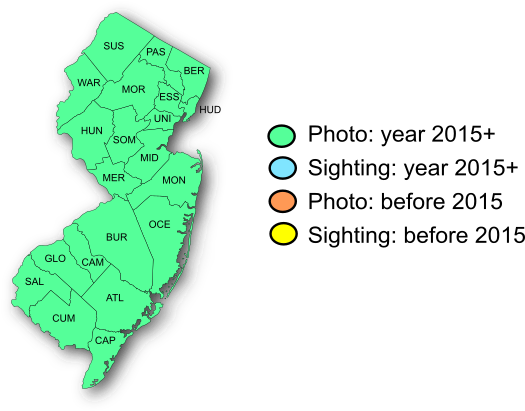
Habitat: Open areas with wildlflowers. Easily attracted to gardens with flowers such as milkweeds, Butterfly Bush, Purple Coneflower, asters, and goldenrods.
Flight Period: Arrival time in NJ is quite variable—some years as early as mid-April, other years not until mid-May. The last of the Mexico-bound fall migrants pass through in November. Extreme dates: North Jersey 4/12—11/24; South Jersey 1/1—12/31. (The extreme dates in South Jersey undoubtedly represent late-migrating or released individuals that did not survive. The most likely first arrival of a natural migrant occurs in early April.)
Caterpillar Food Plants: Various native milkweeds (Asclepias).
Overwintering Stage: Does not overwinter in NJ.
Good Locations: Just about any open habitat. The biggest concentrations occur in Cape May and other coastal locations in fall, where hundreds of migrants can be seen nectaring on Seaside Goldenrod and garden flowers and roosting in Eastern Redcedar trees. Large numbers of fall migrants can also be seen from the inland hawk watches.
Comments: Monarch is the most iconic butterfly of North America, and perhaps the most studied butterfly species in the world.

Male, Six Mile Run Reservoir Site, Somerset Co., NJ, 8/5/07.
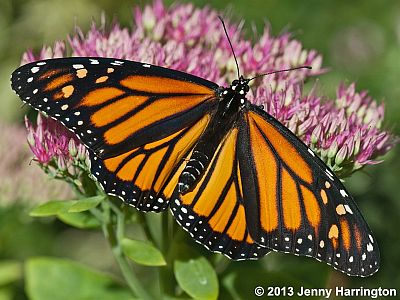
Female, Blairstown, Warren Co., NJ, 9/11/10, on stonecrop.

Fredon Twp., Sussex Co., NJ, 8/19/09, on Purpletop Verbena.
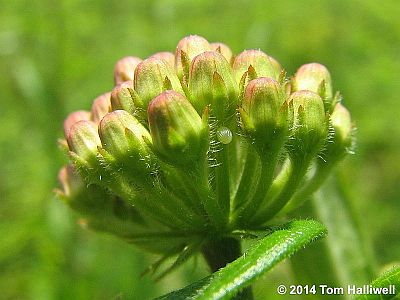
Egg on Orange Milkweed (Asclepias tuberosa).
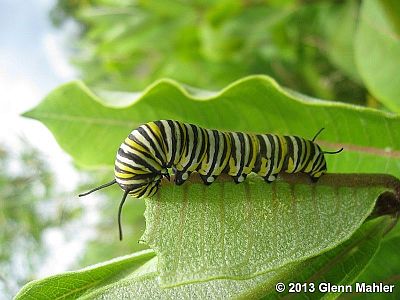
Mature caterpillar on Common Milkweed (Asclepias syriaca).

Late instar of Monarch feeding on seed pod of Common Milkweed (Asclepias syriaca).
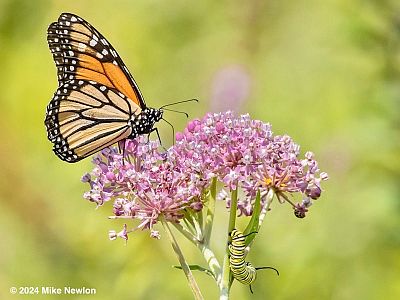
Monarch nectaring on Swamp Milkweed (Asclepias incarnata), with late-instar caterpillar below. This is one of several species of milkweed that serve as host plants for Monarch caterpillars. New Providence Twp., Union Co., NJ, 8/5/20.
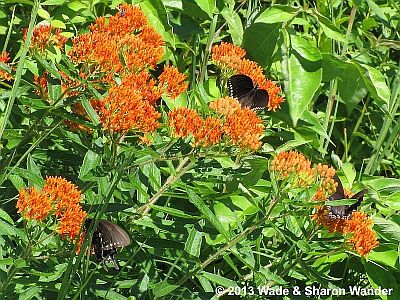
Butterfly Weed or Orange Milkweed (Asclepias tuberosa), another host plant for Monarch caterpillars.

Purple Milkweed (Asclepias purpurascens), another host plant for Monarch caterpillars.